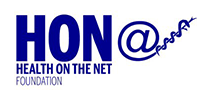
Endovenous Vein Ablation Definition
What is endovenous ablation? It is the most state-of-the-art and minimally invasive method used to “ablate” or remove abnormal leg veins, most notably defective varicose veins of the legs. The term “endo” refers to “within” a vein since the therapies target the inner lumen of the vein. There are many methods of effective endovenous ablation therapy available and all of them are considered safe and effective. Unlike traditional vein surgery that involves removing, ligating, or physically stripping a vein from the leg, endovenous therapy involves the insertion of an IV or needle into the vein to ablate the abnormal vein. The benefit of endovenous ablation is multiple. These benefits include the lack of incisions, decrease in pain, much faster recovery, less chance of scarring, and much lower risk. The use of endovenous therapies rather than open surgery decreases the risks of blood clots, nerve injuries, unsightly scars on the legs, and recurrence of the veins. In addition, with endovenous ablation, there is no need for hospitalization or more dangerous anesthesia since the procedures can all be done in the doctor’s office through an IV line. Patients are generally more satisfied with the results of endovenous therapy over traditional vein surgery.

Types of Endovenous Ablation Therapy for Leg Veins
EndoVenous Laser Ablation Treatment
EndoVenous Laser Ablation Treatment, also known by the abbreviation EVLT or EVLA, is a common therapy utilized to treat varicose vein conditions in the legs. It utilizes targeted laser heat energy that is delivered within the vein lumen to ablate defective leg veins. It is a very successful therapy (98% success rate) and is very safe. It is performed in our vein center and takes about 30 minutes to perform.
Endovenous Radiofrequency Vein Ablation Treatment
Endovenous Radiofrequency Vein Ablation, also known by the synonyms of RFA, Venefit, or VNUS Closure procedure, is another very common therapy utilized to treat varicose vein disease of the legs. It targets the underlying venous insufficiency in the leg to also minimize the chances of varicose vein recurrence. The treatment has an over 97% success rate and can be performed in the physician’s office in about 30 minutes. This technology generates heat energy inside the abnormal veins by using high-frequency sound waves. Radiofrequency treatments ablate with an alternating current in the range of 350–500 kHz. Since the heat generated by an RF catheter is much lower than that delivered by a laser catheter, the discomfort, inflammation, and bruising encountered after the treatment are less than laser therapy. This translates into higher patient satisfaction.
Endovenous Radiofrequency Vein Ablation Treatment
Endovenous Radiofrequency Vein Ablation, also known by the synonyms of RFA, Venefit, or VNUS Closure procedure, is another very common therapy utilized to treat varicose vein disease of the legs. It targets the underlying venous insufficiency in the leg to also minimize the chances of varicose vein recurrence. The treatment has an over 97% success rate and can be performed in the physician’s office in about 30 minutes. This technology generates heat energy inside the abnormal veins by using high-frequency sound waves. Radiofrequency treatments ablate with an alternating current in the range of 350–500 kHz. Since the heat generated by an RF catheter is much lower than that delivered by a laser catheter, the discomfort, inflammation, and bruising encountered after the treatment are less than laser therapy. This translates into higher patient satisfaction.
Endovenous Chemical Vein Ablation Treatment
Endovenous Chemical Vein Ablation, known more familiar as “sclerotherapy” is the most common vein ablation therapy applied to smaller leg veins. It is frequently utilized to treat both spider veins and reticular veins of the legs. A small needle is inserted into the lumen of an abnormal vein cluster and then a chemical is injected into the defective veins. The medication then causes a chemical reaction that ablates the veins. This causes the veins to collapse, die, then fade away. Sclerotherapy is very safe and effective when used for the treatment of small leg veins under 3 mm in diameter. Sclerotherapy can also be performed on larger varicose veins of the legs, although the risks do increase with larger veins (including a higher risk of skin damage, skin discoloration, and recurrence of the veins). Endovenous chemical ablation is very frequently utilized for cosmetic purposes for spider veins and reticular veins of the legs, but it can also be utilized for more significant vein problems as well. A new medication called Varithena can be utilized to treat larger varicose veins and venous reflux disease.


